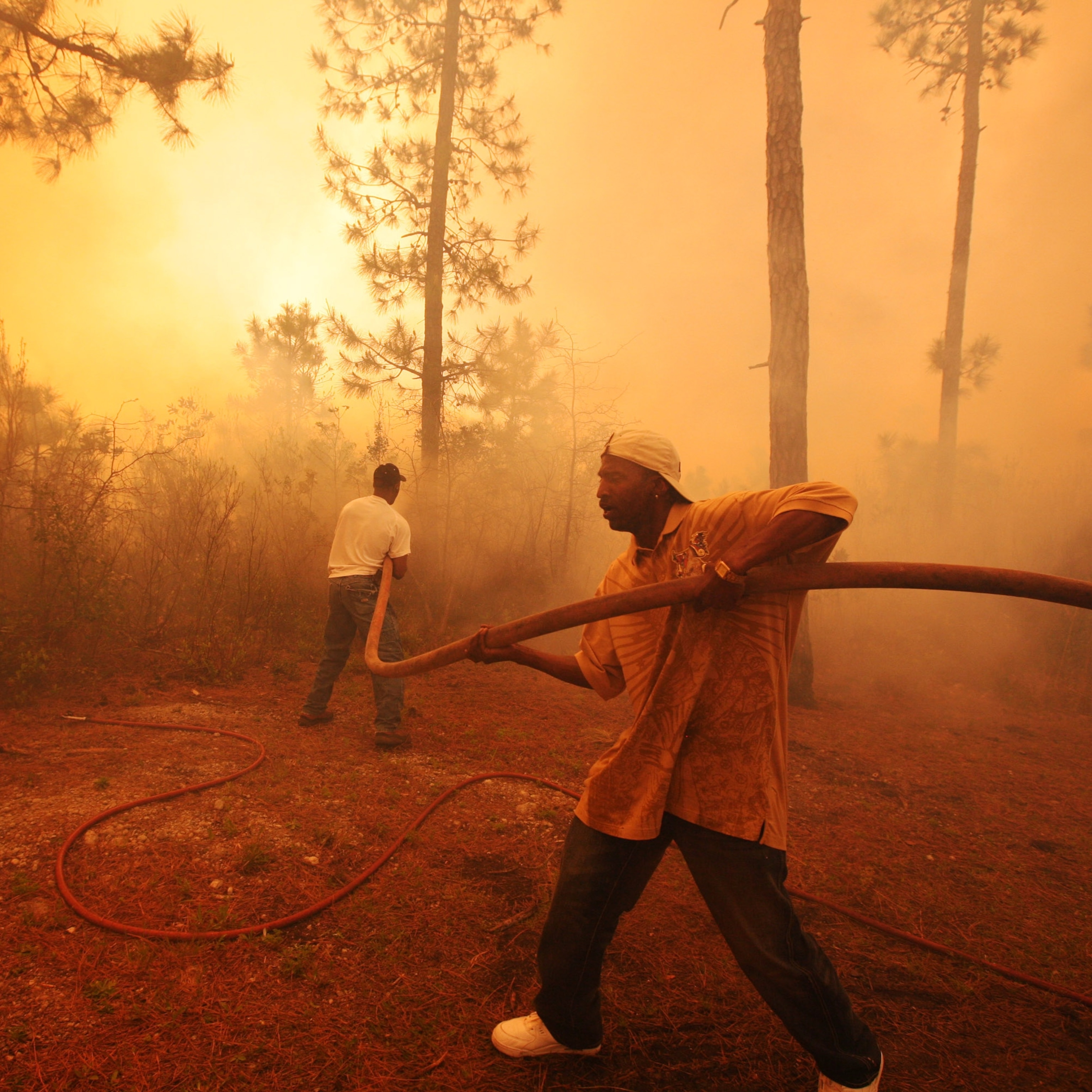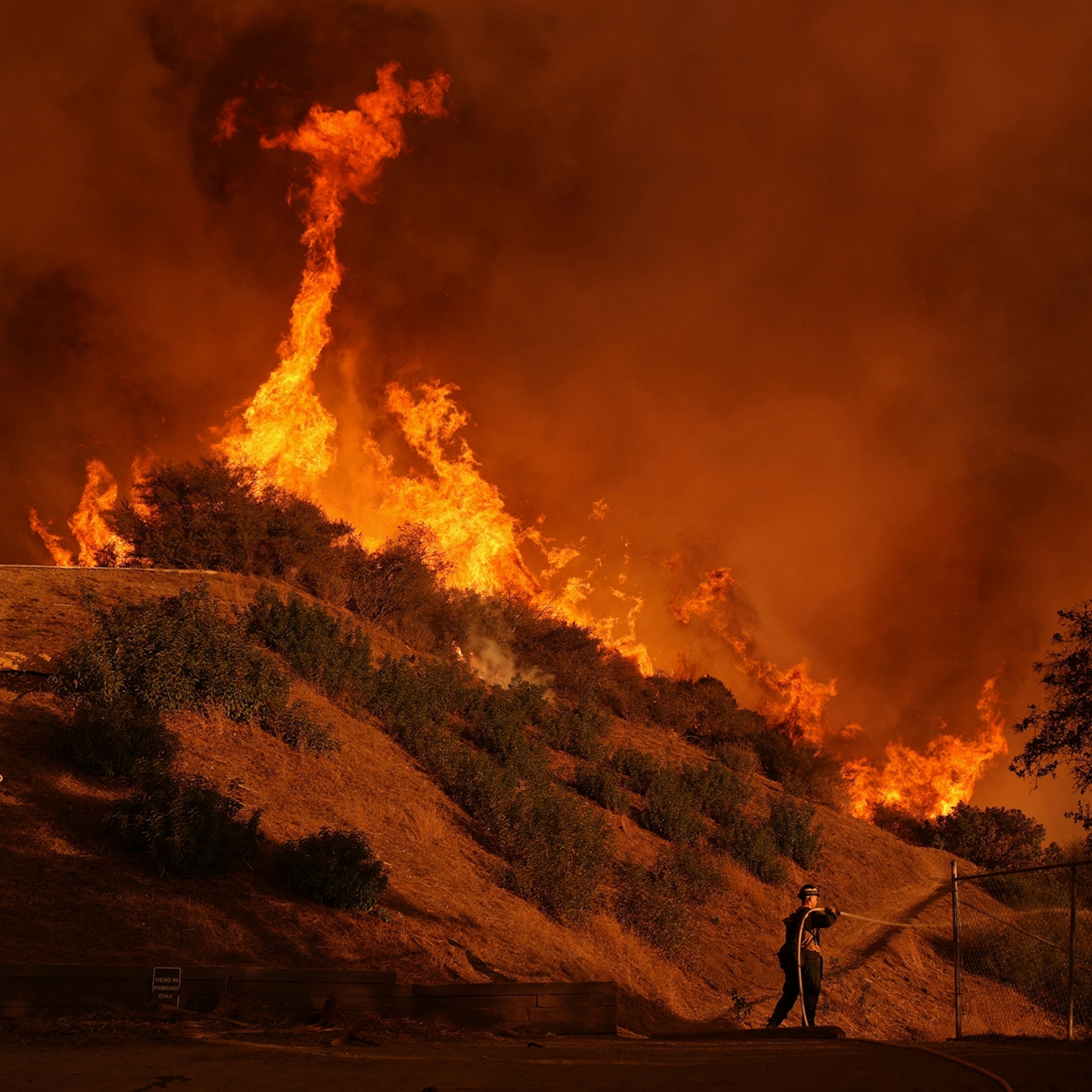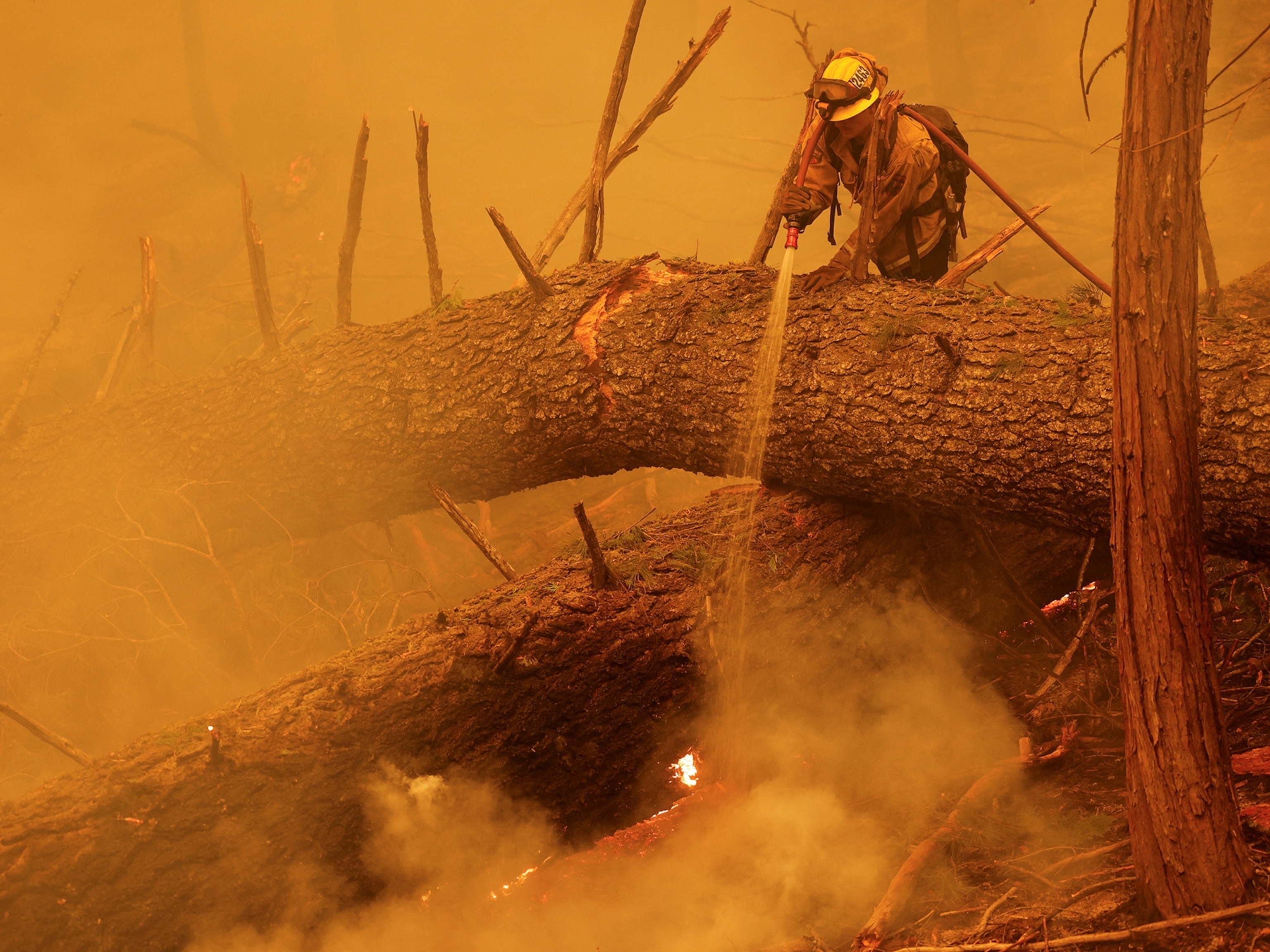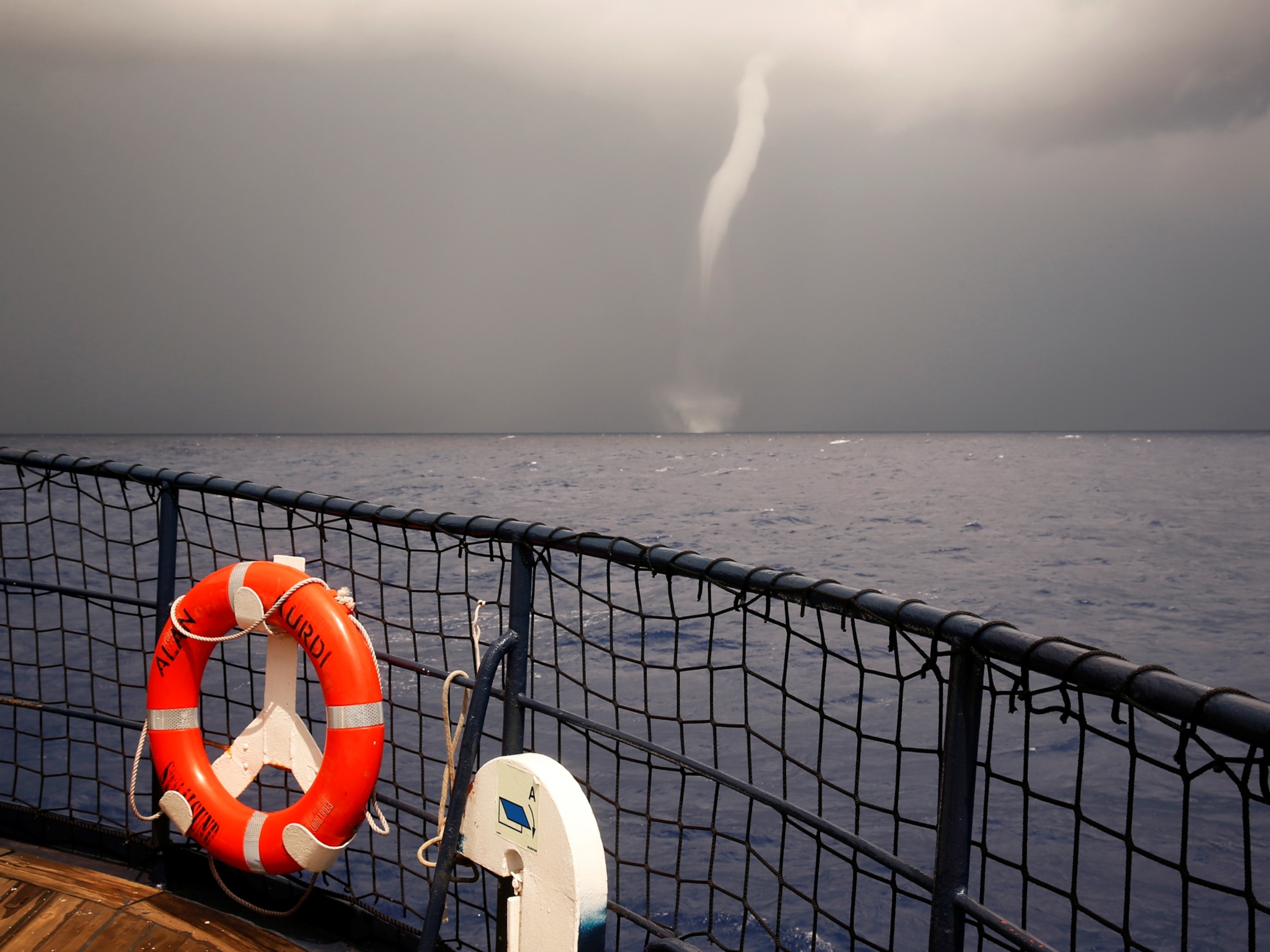Millions depend on the Mississippi—but the mighty river is running dry
Tons of grains and crops are shipped down the Mississippi River every year. What will happen if increasingly persistent droughts shrink America’s longest river?
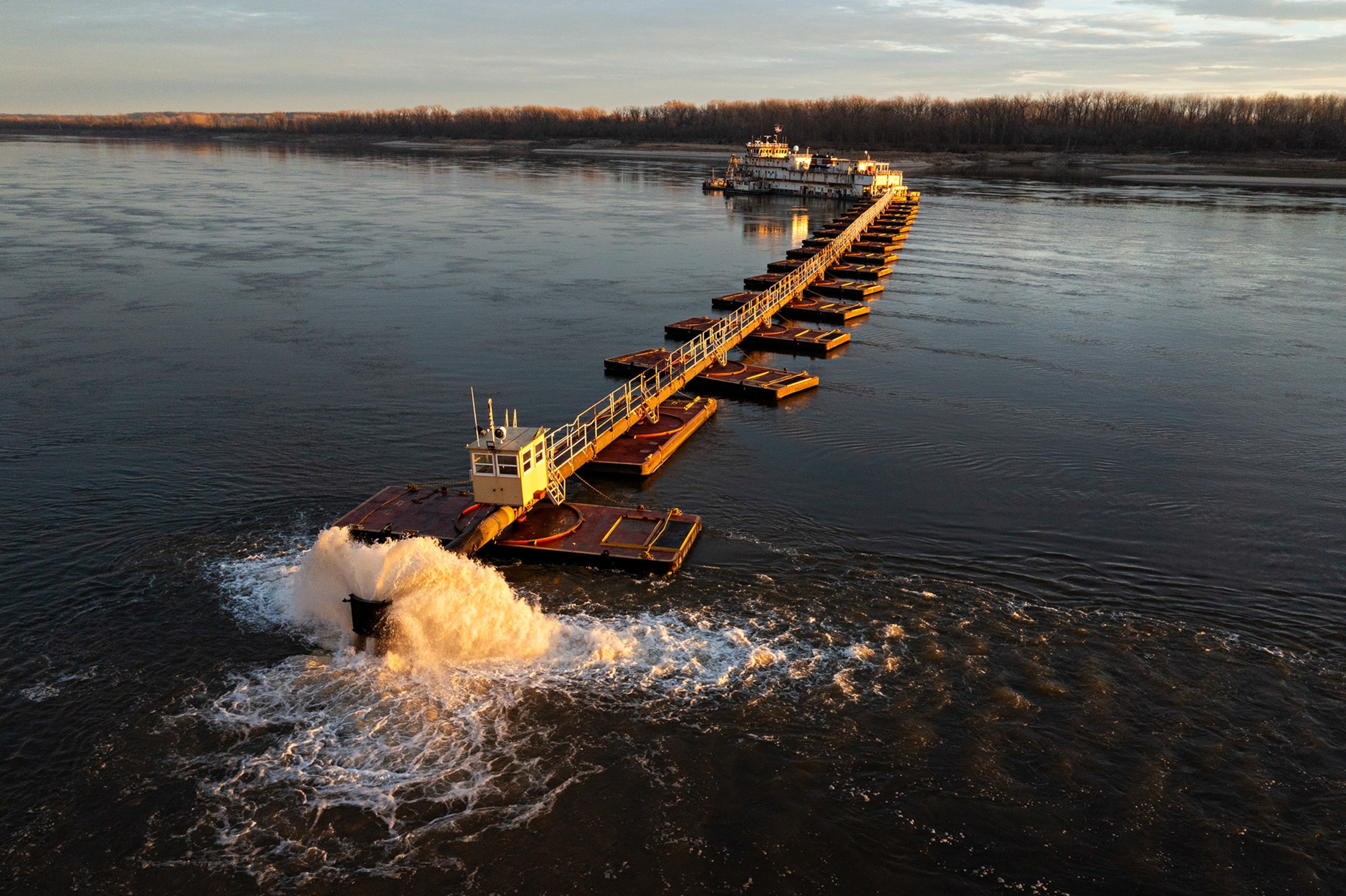
Rockwood, Illinois — About eighty miles south of St. Louis, Brian Ragsdale’s boat, the Dredge Potter, has been deployed by the U.S. Army Corps of Engineers to carve a channel out of the bed of the Mississippi River.
Ragsdale and his on-board crew of 17 are here because the once-mighty Mississippi River is in crisis: Recent years have seen severe, months-long droughts take hold across a vast swathe of America’s Midwest and South, regularly leaving the river at an historic low.
For the past three years, the drought has meant that Ragsdale and his crew find themselves working, eating, and sleeping on board a 92-year-old vessel with the Sisyphean task of dredging millions of pounds of sediment to keep the Mississippi navigable.


Eulogized for centuries, the Mississippi River is far more than just a storied body of water: It is America’s superhighway. Ninety-two percent of all U.S. agricultural exports and 78 percent of the globe’s exported feed grain are transported on the river. From freshly harvested corn shipped all over the world to coffee that’s served in cafes across the Midwest, nearly half a billion tons of goods are shipped up and down the river every year.
But today, the growing frequency of droughts is forcing barges to carry fewer goods. And climate change is playing a role: The Fifth National Climate Assessment, released last November, highlighted that drought could adversely affect the Mississippi with “regional and national implications.”
Just a one-foot fall in water level shaves 100,000 bushels of soybeans from a typical 15-barge tow. That’s the equivalent of 2,738 metric tons—enough to overflow an Olympic-sized swimming pool.
A low Mississippi River is not only bad news for Americans, but also for countries as far away as China, Japan, and Indonesia where Midwestern grain and soybeans are essential food sources.
“It comes down to who is going to feed the world,” says Paul Rohde of the Waterways Council, an inland waterways advocacy group. In 2022, the low river levels resulted in an estimated $20 billion in lost trade. “American farmers can provide that, but we need to make sure we have the transportation available—infrastructure and dredging, in the example of low water.”
Moving Midwest harvests around the world
For Tom Jennings, who farms 4,000 acres of rice, soybeans, and corn 30 miles west of the Mississippi River in southeastern Missouri, the drought has led to worrying scenes.
The low river level last winter, Jennings says, meant that not enough barges were able to get to grain elevators dotted along the river where they were desperately needed to carry off waiting crops. At the height of the 2023 fall harvest, some farmers’ saw their grain turned away from the river by barge operators.
While Jennings irrigates nearly all his crops from an underground aquifer, meaning his growing operation hasn’t yet been directly affected by the drought, he was impacted when low river levels squeezed down the number of barges that could travel at the same time.
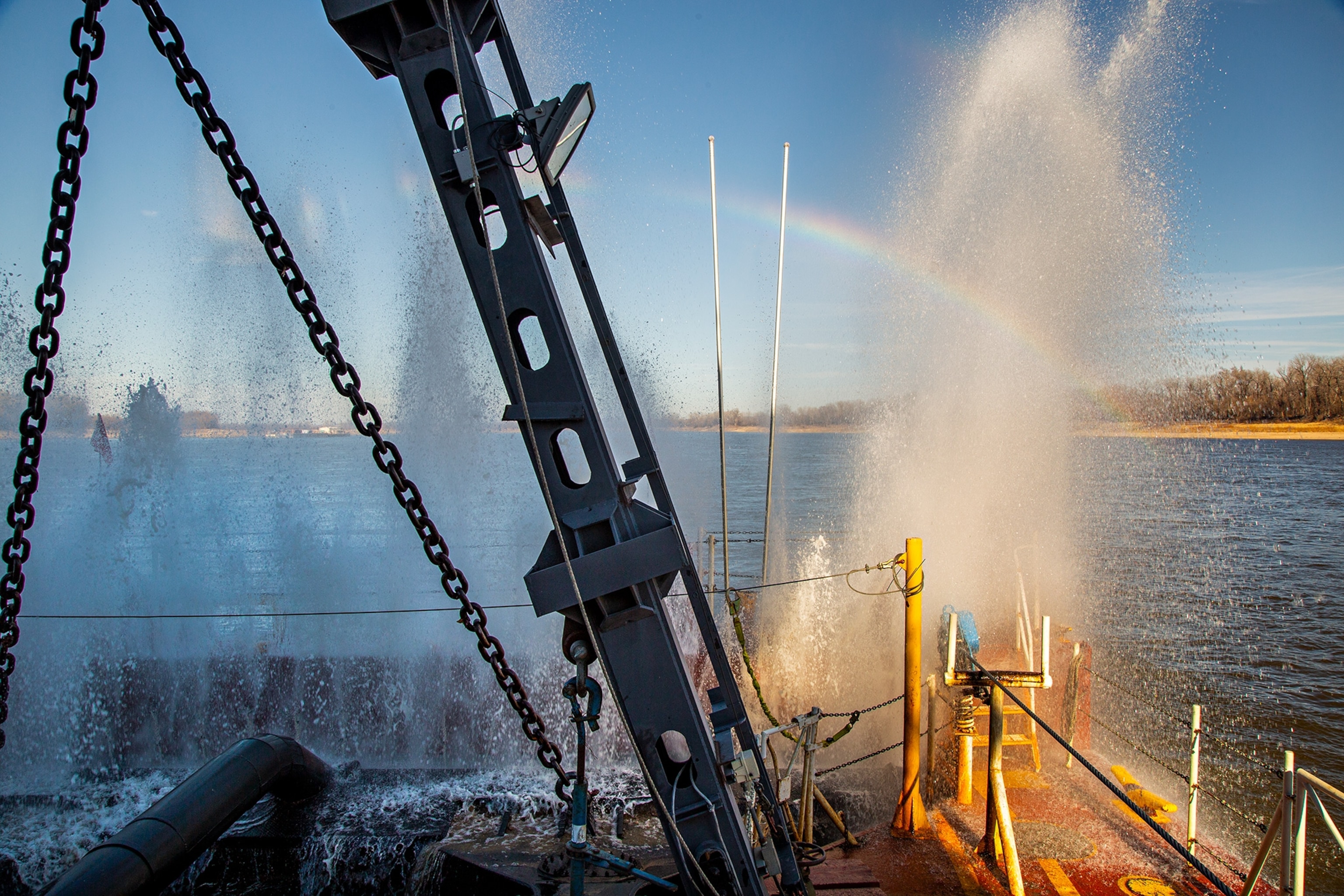
“We were hauling to a buyer that ran out of barges. (But) it just happened that the buyer was readying a rail load that our rice was able to get on,” he says.
“Had they not had that, we would have been shut down until they could get barges in.”
While summer months have seen increased rainfall, particularly along the upper Mississippi River watershed, water levels are falling again—just as the 2024 harvest season gears up. Gauge readings for the river at Memphis show the river is ten feet below normal flow levels.
If water levels dip too low for the river’s many barges the Mississippi shirnks, the environmental cost of shipping massive amounts of goods could increase.
A 2022 study found that barge shipping’s carbon footprint is about one-ninth that of trucking and half that of rail.
Last year, more than 24 million tons of grain and crops were transported on the Mississippi. That’s equivalent to a line of semi-trucks bumper to bumper stretching more than halfway around the planet.
“If we want to be attentive to a carbon footprint, investing in increasing barge transportation makes even more sense,” says Rohde.
Drought along America’s largest river
The Mississippi is an environmental keystone: 40 percent of the continental United States drains into the river.
Sturgeon, herring, and the American eel, which migrate from the Sargasso Sea, rely heavily on floodplains along the Mississippi, says Olivia Dorothy, who led the Mississippi River Restoration project for nine years until this year at American Rivers, an advocacy organization.
“We have a lot of species in the river that need access to areas of slower-moving water for nesting, breeding, or resting,” she says. Very few fish species in the river, she notes, are fast-water specialists.
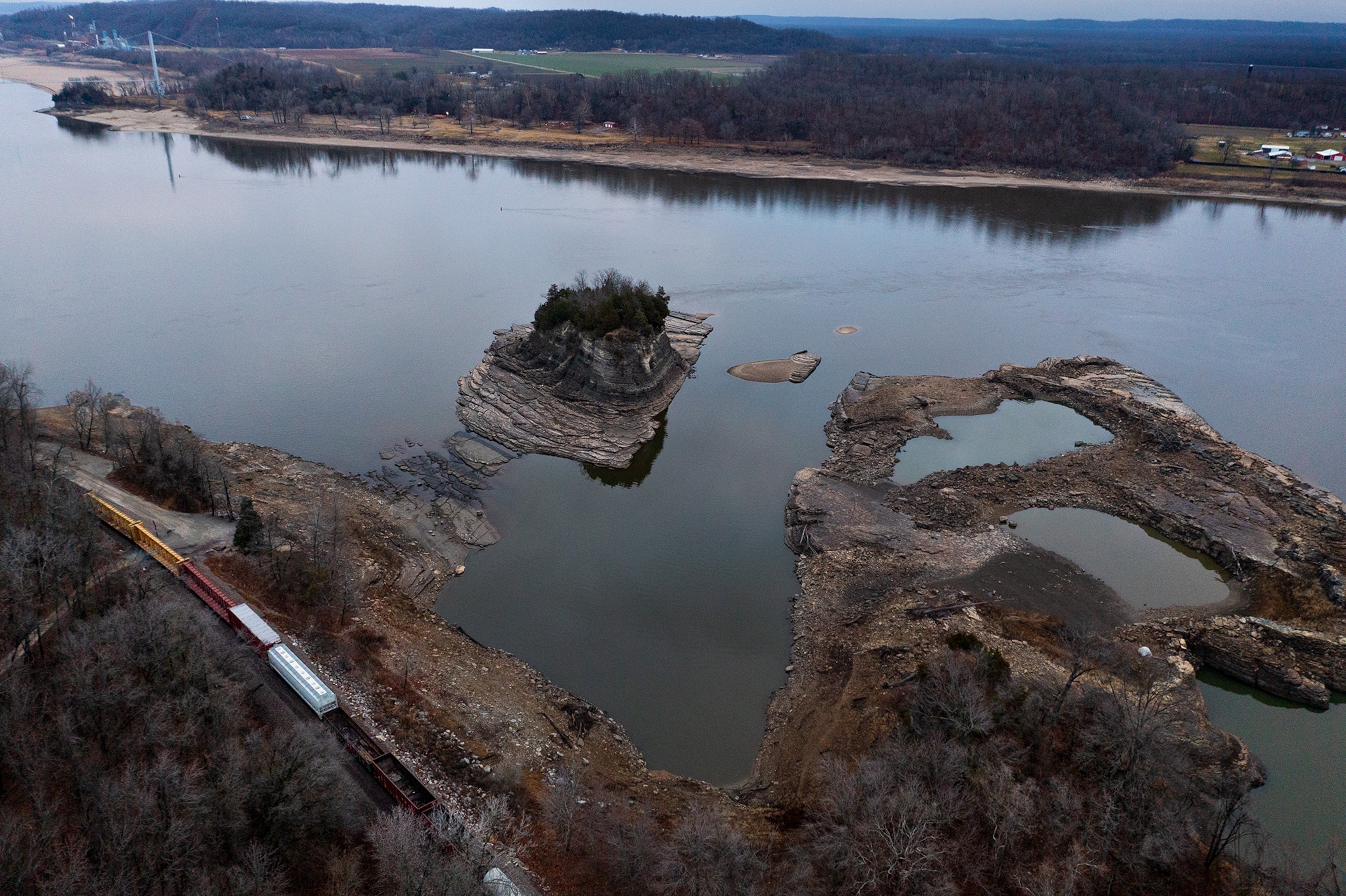
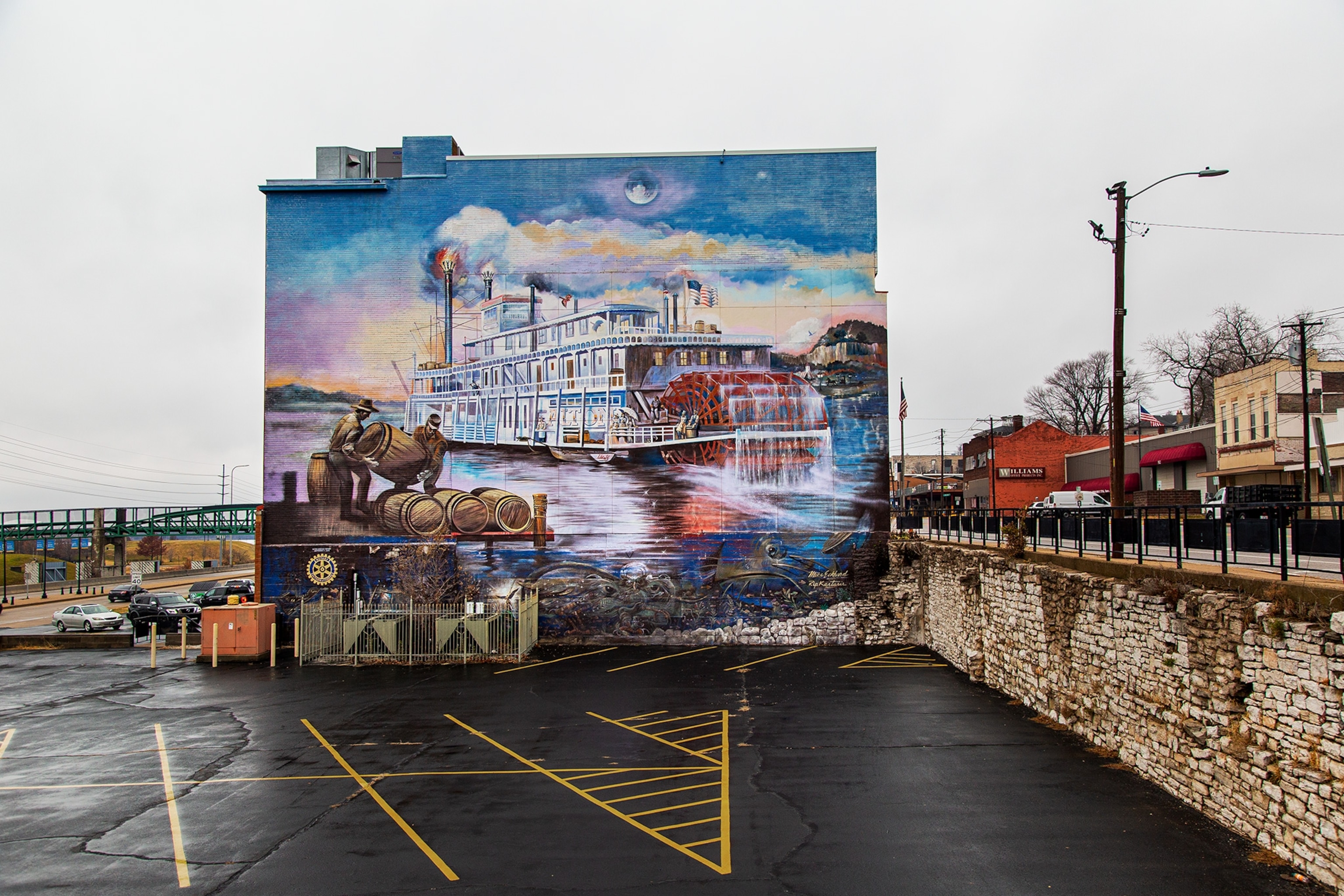
Dorothy lives five minutes from the Mississippi River, in East Moline, Illinois; she regularly paddles across the surface and walks its banks. Over the past two years, she’s watched as it’s dropped lower and lower.
Through her work, Dorothy has documented smaller hatch sizes of insects such as stoneflies, mayflies, and mosquitoes in recent years.
“Those are really important food sources for migrating birds. It’s comparable for people when you think about beef and fish—both have fat, but fish fat is healthier for us. For birds, if there are less aquatic insects, those nutrients can’t necessarily be replaced.”
Dorothy has also observed a drop in the number of mussel species, as well as forage fish such as American shad and darters. “We don’t quite understand what those drivers are yet, but we have a lot of concern with a prolonged drought,” she says.
Carving out space in the river
For the crew aboard the Dredge Potter and a flotilla of other dredgers mandated by the U.S. Congress to maintain a nine-foot-deep transit channel on the Mississippi River, the work goes on.
“We’re trending towards a longer season—July to potentially mid-February,” says Lou Dell’Orco, chief of operations at the St. Louis District Corps of Engineers. “In an average year, we would dredge about three or four million cubic yards. In 2022 it was 10 million.” By last November, more than six million cubic yards were moved.
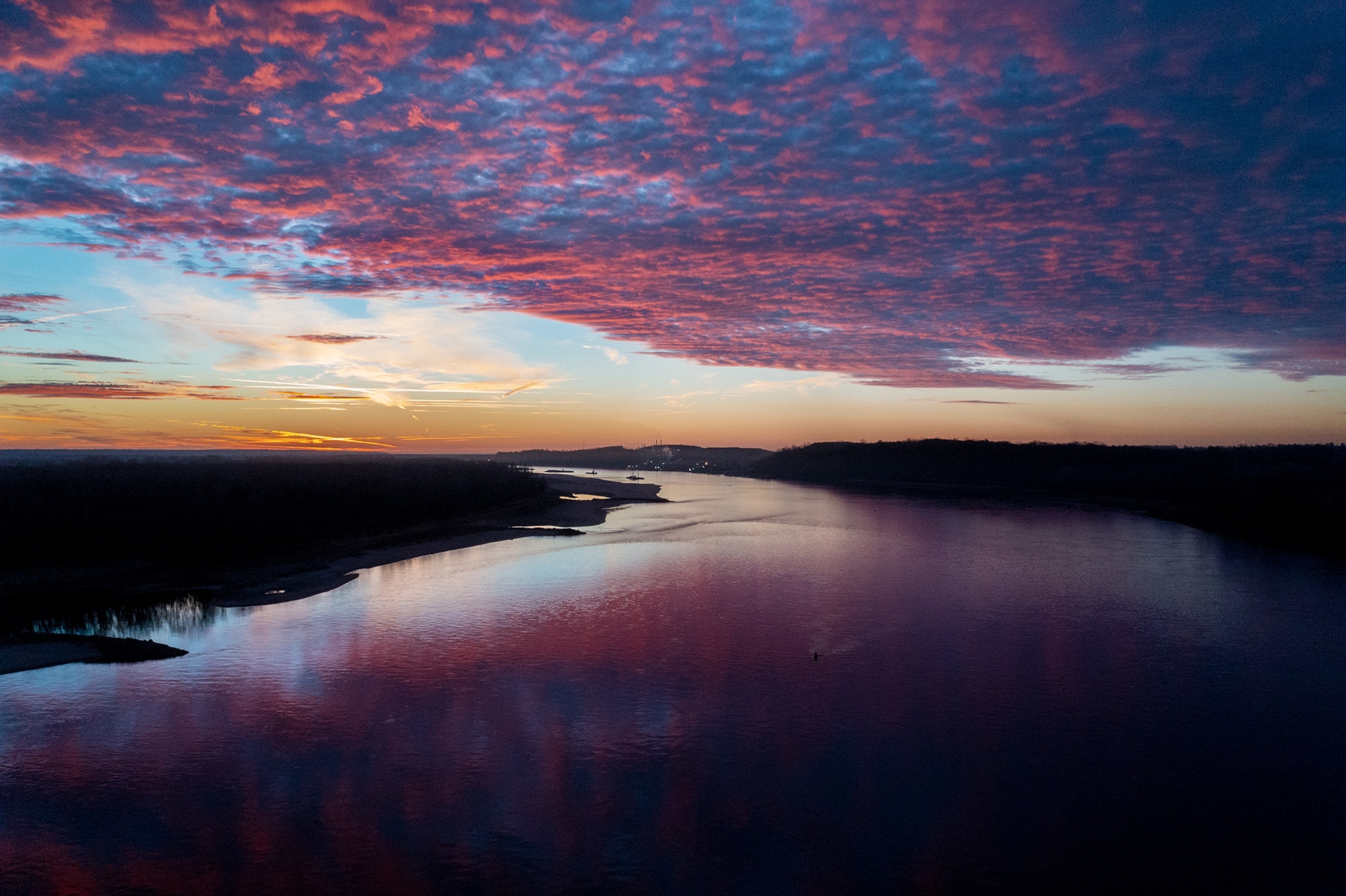
The dredge operates by blasting water into a 32-foot-wide section of riverbed to agitate the mud and silt. A massive pump then sucks up the soupy mixture that’s then carried along a pipe and dumped back into the water closer to the riverbank.
River traffic, at its peak in late fall, slows the whole process right down: Every time a tow or boat approaches, the dredge is forced to stop and move out of the way to let it pass through the channel.
But perhaps the most troubling recent change, say observers, is the scale of recent droughts. Currently, a wide stretch of land both to the east and west of the Mississippi River is abnormally dry or worse, from north of St. Louis all the way south to Baton Rouge.
“In 2022, we had five of the big dredges in this area because it was a more localized drought,” says Dell’Orco.
“Now, it’s more widespread, from here all the way down to Louisiana.”


